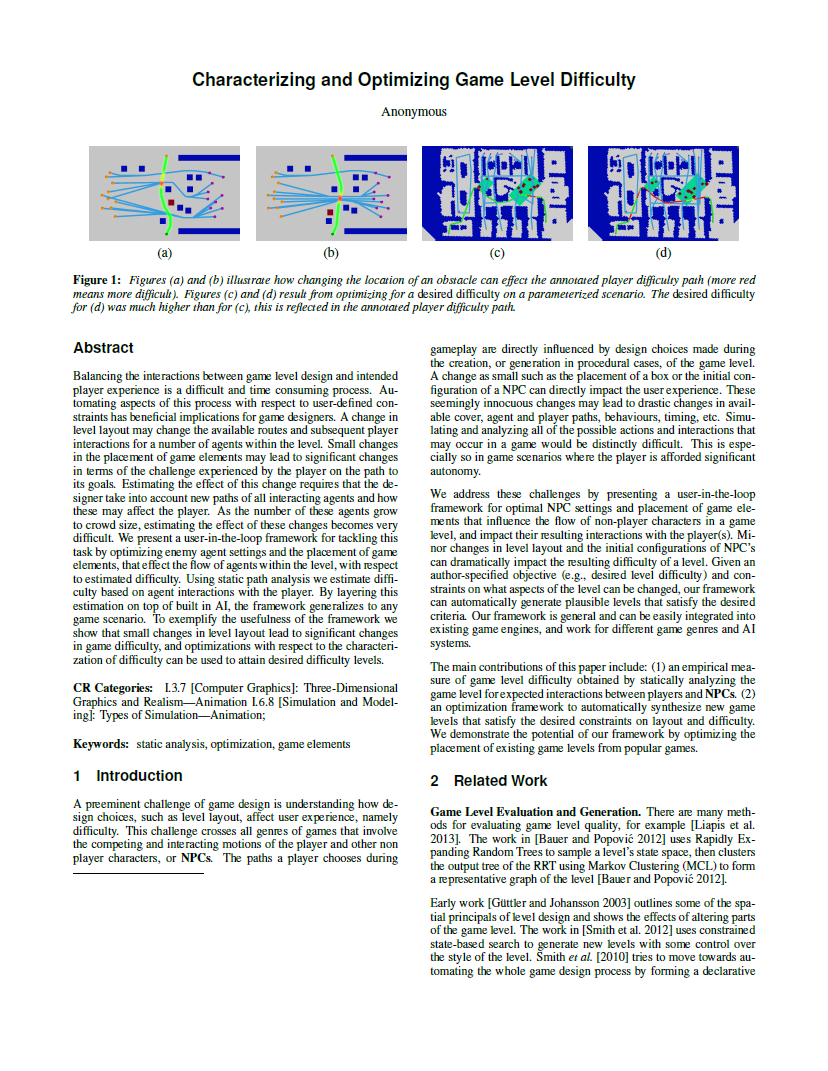Abstract

Balancing the interactions between game level design and intended player experience is a difficult and time consuming process. Automating aspects of this process with respect to user-defined constraints has beneficial implications for game designers. A change in level layout may affect the available routes and subsequent player interactions for a number of agents within the level. Small changes in the placement of game elements may lead to significant changes in terms of the challenge experienced by the player on the path to their goal. Estimating the effect of this change requires that the designer take into account new paths of all interacting agents and how these may affect the player. As the number of these agents grow to crowd size, estimating the effect of these changes becomes grows difficult. We present a user-in-the-loop framework for tackling this task by optimizing enemy agent settings and the placement of game elements that affect the flow of agents within the level, with respect to estimated difficulty. Using static path analysis we estimate difficulty based on agent interactions with the player. To exemplify the usefulness of the framework, we show that small changes in level layout lead to significant changes in game difficulty, and optimizations with respect to the characterization of difficulty can be used to attain desired difficulty levels.
Related Articles

Characterizing and Optimizing Game Level Difficulty
Glen Berseth, Brandon Haworth, Mubbasir Kapadia and Petros FaloutsosACM SIGGRAPH Motion in Games 2014
Bibtex
Videos